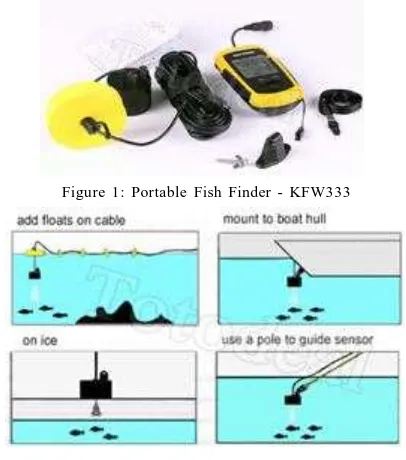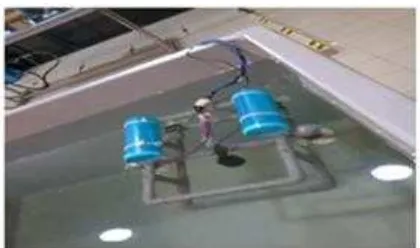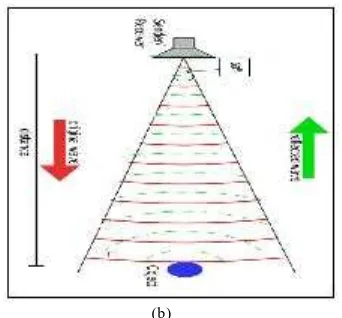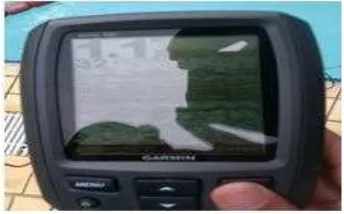© 2013 ACEEE 110
Development of Subsea Altimeter Sensor System
(SASS) Using Portable Sonar Sensor Fish Finder
Alarm for Unmanned Underwater Vehicles
M.S.M.Aras1* , A.S.Mohd Nor1 , S.S.Abdullah2, Rashid, M.Z.A1,A. Jamali31Faculty of Electrical Engineering, Universiti Teknikal Malaysia Melaka, Hang Tuah Jaya, 76100 Durian Tunggal, Melaka Malaysia.
Email: [email protected], [email protected], [email protected]
2Department of Electric and Electronics, Malaysia-Japan International Institute of Technology, Universiti Teknologi Malaysia, International Campus Jalan Semarak, 54100 Kuala Lumpur, Malaysia.
Email: [email protected]
3Department of Mechanical And Manufacturing Engineering, Faculty of Engineering, University Malaysia Sarawak, Jalan Dato’ Muhammad Musa, 94300 Kota Samarahan, Sarawak.
Email: [email protected]
Abstract—This paper describes the development of Subsea Altimeter
Sensor System (SASS) for Unmanned Underwater Vehicles (UUV) Application using portable sonar sensor fish finder alarm system. Altimeter Sensor system is used to measure the depth of water. This altimeter sensor design valid for shallow water depth ranges maximum 100 m. This SASS will be applied to Underwater Remotely Operated Vehicles (ROV) design to verify the SASS performances. Experiments conducted to measure a depth of lab test, swimming pool test and Ayer Keroh Lake test. The experiments conducted in lab pool and swimming pool to measure and estimate the error and accuracy of SASS performances because of known the depth of water. The error of Altimeter Sensor System is 10% or ± 5 cm depth and accuracy of SASS very high about 90% for the both experiments. The results on Lake of Ayer Keroh at certain point can be acceptable. The 3D design of seabed mapping is plotted using MATLAB and Excel.
Index Terms— Altimeter Sensor, Sonar Sensor, Fish finder,
Re-motely Operated Vehicles (ROV)
I. INTRODUCTION
An altimeter is an instrument used to measure the altitude of an object above a fixed level. The measurement of altitude is called altimetry, which is related to the term bathymetry, the measurement of depth underwater. Portable Sonar Sensor Fish Finder Alarm Transducer (KFW 333) is used to measure the depth of water and localization of fish as shown in Figure 1. This product is especially designed for amateur and professional fisherman alike, to find out the location of fish and depth of water. This product can be used in ocean, river or lake and is fantastic for detecting schools of fish in any particular area and can shows the depth of water or shows the seabed of water. This device sends a sound wave into the water by way of the transducer. The sound wave reflects off an object such as a fish, or the bottom, and is detected by the transducer also. These echoes are interpreted by the fishfinder and sent to the display. This simple process can provide with us a wealth of information about the unseen region below the water’s surface. The KFW 333 is a low cost, lightweight altimeter designed for diverse applications in the
marine environment.
Figure 2 shows how to use the portable fish finder. Four techniques to using this portable fish finder such as mount on boat hull, add floats, on ice and use a pole to guide the sensor. So, the technique number four will be used but the pole will be replacing with one of types an unmanned underwater vehicle that called it as ROV (Remotely Operated underwater Vehicle) as shown in Figure 3. Added more features will become more expansive. The two major specifications will be used to purchase the portable fish finder such as the transducer and display.
Figure 1: Portable Fish Finder - KFW333
Figure 2: How to use Fish Finder
A. Feature and Specifications
Feature of portable fish finder such as given below, and specifications stated in Table 1.
1) Detect and display grass, short & tall weeds, sand, and rocks on seabed
© 2013 ACEEE 111 3) Round transducer sensor with 7.5m cable, 45o beam angle 4) With fish depth scale and audible fish alarm
5) User selectable meter or feet readings
6) Range of depth readout from 0.3m up to 100 meters 7) Display bottom rock or grass
TABLE I: SPECIFICATIONS OF PORTABLE FISH FINDER
The propagation characteristic of acoustics underwater highly depends on local environmental factors such as distance from the ocean surface and depth to the sea-bed as well as salinity and temperature in the water [1]. As a result, an error control code system that is designed for one particular depth may not work well for a different depth. For example a coding system with high redundancies is required for shallow water transmission since the acoustic signal could be reflected by the ocean surface randomly. In fact in a series of experiments [2] showed that up to 20% of the signal could be lost due to the reflection from the ocean surface for the particular set of equipment they used.
Figure 3:Portable Fish Finder attached to ROV and tested on lab pool
(a)
Figure 4 shows the SASS are tested with different depth to identify the tolerance of error as discussed in next section.
(b)
Figure 4: (a) At 50 cm level of Sensor (b) At 30 cm level of Sensor
II. THEORY
Sonar sensor contains two main parts which are transmitter and receiver as shown in Figure 5. These two parts have their own function. The transmitter will emit the pulse meanwhile the receiver will receive the pulse that bounce back when hit an object under the water. The reflected of the pulse is known as echo [8][14].
Figure 5: How sonar sensor works
The sensor has limitation of the coverage area. Since it works at 200 kHz, the capable coverage is only 60p . That means the object outside the area will not be detected by the sensor. In the process of transmitting the pulse, there should be no interruption until the pulses reach the seabed [9]. Any kind of interruption will cause a defect in process of data taken. In the other words, the efficiency of sensor will be affected because of interruption [10-12] .Figure 6 shows the transducer works to measure depth of water. The frequency used for the SASS is 200k Hz. Wavelength of SASS is about 1.5km length.
© 2013 ACEEE 112
(b)
Figure 6: the transducer works to measure depth of water
III. RESULTS
Generally, the experiment was divided into two parts. First part of the experiment is to find the accuracy of the device. The discussion will focus on the comparison between real depth and measured depth of the pools. The second part is to measure the seabed mapping. It is important to evaluate the performance of the device before testing at the real field because we never know how good the device is until it is proven. Another reason for testing the device is to ensure its quality and reliability. In order to measure the accuracy, the device was tested at the three pools which the depth of the pools is known. Accuracy means the difference between the result of the measurement and the true value of the measurement. The difference between two measurement cannot be assumed as ‘mistakes’ but it is called a variation in the measurements or in simple word is called as ‘error’.
A. Lab tank test
Since the measurement process is indirect, and the measurement environment is complicated by many factors affecting the instrument readings, corrections to the raw data are needed before they are used to compute geophysical parameters. Figure 7 shows the lab tank for measure a depth while Table 2 shows the results testing on lab pool. From Table shows that error for SASS is about 7.7% or ± 5cm depth. Figure 8 shows the comparison performances of SASS.
Figure 7 : Lab tank
B. MBMB Swimming pool
MBMB Swimming pool is under Melaka City Council
TABLE II. RESULTS TESTING ON LAB POOL
Figure 8: Actual and Measured Data (m) VS Distance (m) for lab tank test
responsibility and situated in Banda Hilir. The size is about 50m x 25m with 8 lane pools and a depth of between 0.9m to 3.8m.
TABLE III. MBMB SWIMMING POOL TEST
Percent of error, E3for experiment 3 is:
© 2013 ACEEE 113 microsoft office excel.
Figure 9: Results Testing on MBMB swimming pool
TABLE IV. DATA TAKEN AT EAGLE RANCH RESORT’S SWIMMING POOL
The Table 4 shows the data taken at the swimming pool. Real data represent the true measurement meanwhile measured data is the readings taken from the device. Real data has not changed since the depth of the pool is 1.3m. The distance means the data taken from the edge of the pool. To obtain a better data, readings taken at every 5m. From the Table 4, it can be seen that only one data recorded correctly as in real data while three other data recorded in contrast to the original. It shows that there is inequality between the real and measured data using the device. Because of the differences, it can be said that the device has an error. Percent of error for experiment 1 is:
Unlike swimming pool at Eagle Range Resort with only one depth, the swimming pool at this resort has different depth starting with 0.4m up to 1.5m. But the process of taking the reading is same. The only thing need to be sure during the measurement is to make sure the device is positioned at the depth measure. For example when taking the reading at depth 1.2m, be sure the device place at the right depth.
Figure 10: The device recorded 1.1m at 1.2m depth
The Figure 10 shows the depth of 1.2m, which is the place where the device takes the reading. But in Figure 10 shows the reading of 1.1m. This situation happen not because the device was placed at the 1.1m but there is error occurs. In the Table 5, the error also can be seen at few other readings.
TABLE V. DATA TAKEN AT CASA RACHADO RESORT’S SWIMMING POOL
Table 5 shows the readings taken from the pool. It can see that, from five readings taken, only two readings show the accuracy with the actual data. This shows uncertain in measurement or error. The absolute error for the experiment at the Casa Rachado’s Swimming Pool is shown below. Percent of error for experiment 2 is:
C. Seabed Mapping of Tasik Ayer Keroh
After testing the device at the three pools and satisfied with the accuracy of the device, then the device was used to measure the seabed at the research actual field.
Figure 11: Ayer Keroh Lake
There is a difficulty in measuring the size of the lake because of the irregular shape. The best way to measure the side of the lake is using reading taken from Google Earth as shown in Figure 11. The length of every side taken in straight line even though it is known that the shape of the lake is nearly circular. The readings of every side are shown in Table 6.
© 2013 ACEEE 114
TABLE VI. LENGTH OF EVERY SIDE OF TASIK AYER KEROH
in the middle of the lake as shown in Figure 12. The next experiment done on ayer keroh lake. The layout of testing area at ayer keroh lake as shown in Figure 12. For the first experiment only one set point to measure the depth and the result as shown in Figure 13. To do 3D plot more data needed. 31m length x 31m width testing and some data collection. Every 1m the SASS will be ,measuring the depth
Figure 12: Experiment set up at Ayer keroh Lake
Figure 13: Results testing on Ayer keroh Lake at one certain point
(a)
(b)
(c)
Figure 14: The view of seabed mapping plotted using MATLAB with different view
Figure 14 shows the results plotted on 3D dimension of seabed mapping using MATLAB software. Difference views of depth as shown in Figure 14. From the thirty one lines, it can conclude that the depth of the lake is always changing at different point. That means, there is no flat seabed for the lake [13]. The difference of seabed might be caused by the different mineral seabed such as clay, bedrocks or waste since the lake is open to public for water activities.
Realized the importance of seabed mapping for various purpose, it is good if the research can be extended to the next level. One of the further researches is to study the relationship between depth and water density. In particular, it is necessary to investigate how density changes as the depth changes. Whether it is directly proportional or nor related at all. Or maybe there are other factors that influence the changes. Another further research can be made is the study of the relationship between depth and seabed min eral and investigate whether the depth of the water can describe the condition of seabed mineral.
IV. CONCLUSION
© 2013 ACEEE 115 pulse taken to reflect back to the device will be used to measure the distance from the device and seabed. The accuracy of the device sometimes needs to be ensured before used in measuring. Normally, there is difference between true value and the result of the measurement.
Altimeter Sensor system is used to measure the depth of water and valid for shallow water depth ranges maximum 100 m. This SASS will be applied to Underwater Remotely Operated Vehicles (ROV) design to verify the SASS performances. The error of Altimeter Sensor System is 10% ±5 cm depth and accuracy of SASS very high about 90%. Future work is to plot more lake and river in Melaka. All data will be useful for safety and rescue.
ACKNOWLEDGEMENT
Special appreciation and gratitude to honorable University (Universiti Teknikal Malaysia Melaka, UTeM and Universiti Teknologi Malaysia, UTM) especially to the both Faculty of Electrical Engineering for providing the financial as well as moral support to complete this project successfully.
REFERENCES
[1] C. Chen a, A. Anvara and T. Lua, Modelling and Simulation of Automated Un derwater Acou stic C ommun ication Transmission Recovery for Oceanic Robotics Operations, 19th International Congress on Modelling and Simulation, Perth, Australia, 12–16 December 2011.
[2] Bevan, J., D. L. Zhao, X. Mu, and N. H. Yahaya (2010, October). Intelligent robot long-distance hybrid secure communication control. Honour Thesis.
[3] David W. Hancock. Ronald G. Forsythe, and Jack Lorell, Seasat Altimeter Sensor File Algorithms, IEEE Journal of Oceanic Engineering, Vol. Oe-5, No. 2, April 1980
[4] John L. Macarthur, Design of The Seasat-A War Altimeter, IEEE Journal of Oceanic Engineering, April 1976
[5] Report No: 406, Fundamentals of Underwater sound, International Association of Oil & Gas Producers, May 2008. [6] Lawrence E. Kinsler and Austin R. Frey, Fundamentals of
Acoustics., 4th . ed. New York. John Wiley & Sons, 2002.
[7] I.Ceren Elmasli and Hayrettin Koymen, A Wideband and a Wide - Beamwidth Acoustic Tran sdu cer Design for Underwater Acoustic Communications, IEEE, 2006. [8] W. A. Smith, Modelling 1-3 Composite Pizoelectrics:
Thickness Mode Oscillations, IEEE Trans Ultrason. Ferroelec. Freq. Contr., Vol. 38, pp. 40-46, 1991.
[9] Qiao Ziliang, Lei Kaizhuo, Zhang Qunfei and Teng Duo, Response Characteristics of Acoustic Transducer in Intense Sound Pulse, IEEE, 2008.
[10] Ali R. Amiri-Simkooei, Mirjan Snellan and Dick G. Simmons, Principle Component Analysis of Single-Beam Echo-Sounder Signal Features for Seafloor Classification, 2011.
[11] D. D. Sternlicht and C. P. D. Moustier, Remote sensing of Sedimen t Characteristics by Optimized E cho-envolope Matching, IEEE, 2003.
[12] R. T DeKeyzer, J. S. Byrne, J. D. Case, B. A. Clifford amd W. S Simmons, A Comparison of Aucostic Imagenary of Sea Floor Features Using a Towed Side Scan Sonar and a Multibeam Echosounder, IEEE, 2002.
[13] Henry Manik and Masahiko Furusawa, Combined Underwater Acoustic and Radar Instruments for Assessing Fish Near Seabed and Mapping Seabed, IEEE, 2002.




